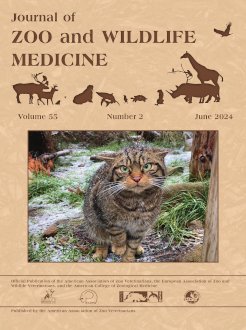The mass extinction of amphibians necessitates specialized programs to ensure species' survival. Maryland Zoo in Baltimore houses the largest assurance population of the critically endangered Panamanian golden frog (Atelopus zeteki). However, individuals in this population experience a tetany-like syndrome, characterized by rigid/inappropriately positioned limbs and difficulty hopping, swimming, and righting. In this study, a syndrome case definition was assigned and the associated clinical signs were described. Then, four different treatments were systematically assessed in order to find the most effective protocol for treatment and begin to elucidate its underlying causes. Eighty-three frogs fulfilled the case definition and were treated orally for 14 d with either calcium gluconate, magnesium chloride, supplemental gavage feeding, or combination of calcium, magnesium, and vitamin B complex. Frogs were tested with a defined protocol assessing hopping, righting, and swimming abilities. Testing was performed at symptom onset and repeated weekly until resolution occurred. Analyses revealed that combination treatment was significantly more effective in eliminating clinical signs of tetany syndrome. Results show the most effective way to treat this syndrome, but do not help elucidate the underlying cause. Future work will focus on examining factors (e.g., diet, husbandry) that may elicit the syndrome for a more complete understanding of its etiology.
How to translate text using browser tools
13 June 2024
CASE DEFINITION AND TREATMENT TRIAL OF TETANY SYNDROME IN PANAMANIAN GOLDEN FROGS (ATELOPUS ZETEKI)
Sean P. Coyne,
Kevin Barrett,
Jennifer Shultz,
John A. Flanders Jr.,
Ellen Bronson
ACCESS THE FULL ARTICLE





